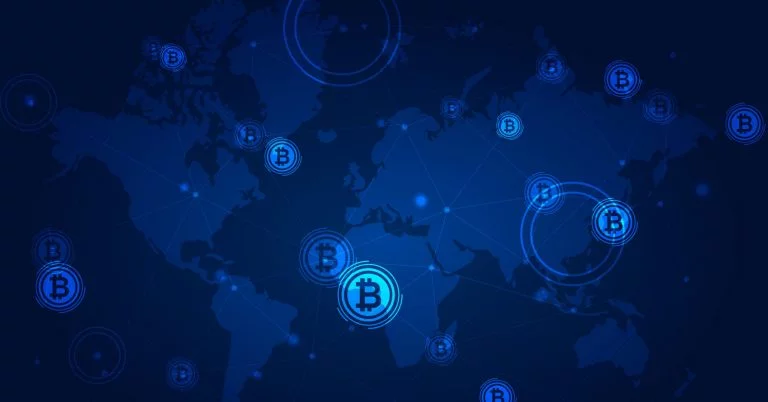
- Amber Smith
- January 31, 2022

With the advancement of technology, new ways of storing and exchanging money are evolving day by day. Advancement in modern technologies has brought many innovative payment systems to help us carry out our daily transactions without having to worry about carrying physical cash.
How can blockchain be used in banking?
Blockchain technologies allow for a payment system without a third party using bitcoin as an example. In this case, transactions are direct between two parties instead of through someone else who adds fees and processing times. It is this decentralized process that appeals to banks because it allows them to work in much the same way as credit card companies and credit card processors. One of the biggest ideas for using blockchain with credit cards is that of a decentralized system for processing transactions. This would allow the banking industry to do away with one of their biggest expenses, which is payment processing fees.
Another positive aspect of using blockchain in a transaction is that there are no long waits or extra fees associated with a transfer before it goes through. In this sense, it is a quick and easy way to make funds available.
Blockchain technology could also be used for creating new types of loans with the blockchain as a guarantee for repayment. Currently, banks must wait until funds are actually transferred before they can release others but using blockchain would allow immediate payment so banks could give out more credit than they currently do. They would also be able to work with borrowers from anywhere in the world.
Figures released by research company Greenwich Associates show that more than $3 billion was invested in blockchain initiatives during 2016, with that number expected to increase significantly this year. The benefits of blockchain for banks are well known: fewer intermediaries, speeding up transactions, and a significant reduction in costs. However, there is a lot of work to be done before blockchain can deliver on its promises.
The emergence of Bitcoin and altcoins
Bitcoin and digital currencies did not appear out of thin air and did not become so popular without the help of some innovative technologies. Blockchain technology is one such invention that has contributed to the rise in the fame of cryptocurrencies. To put it into simple words, blockchain is an open distributed ledger that records transactions between two parties efficiently, in a verifiable and permanent way.
The blockchain was first introduced with the release of the Bitcoin protocol, but soon many other cryptocurrencies like Ethereum were developed using this technology. This is because blockchain can be used to solve various problems related to finance and transactions which are still unsolved by the payment systems we use today.
Payment systems that enable us to transact money easily and quickly using a device connected to the internet have been available for a long now. But it is still debatable whether these new payment services have made our lives simpler or just complicated them further by keeping us hooked on electronic transactions. The convenience of conducting our daily purchases from websites like Amazon and eBay and transferring funds to our friends and relatives in a few seconds using one-click payments has definitely made life easier.
Benefits of blockchain for payments
Blockchain May Speed International Payment Processing Services
The key reason why blockchain may speed international payment processing services is the disconnect among different payment systems around the world. A company wishing to conduct business with another one often has to go through several payment intermediaries to ensure the transfer of funds. The process is time-consuming, expensive, and has an increased risk of fraud or failure of timely processing.
Blockchain technology was created by the founder(s) of Bitcoin as part of the digital currency system. It represents an innovative method for transferring value between entities that is transparent, decentralized, highly resistant to fraud, and almost instantaneous.
With blockchain, transactions are recorded and stored across a decentralized network of computers around the world. Anytime a transaction occurs, it is validated by multiple computers and then encrypted into a block that is added to the chain of previous ones – hence the name blockchain. The advantage of this setup is that once information is entered into the blockchain, it cannot be altered or erased. It ensures that all transactions are valid and up-to-date.
Blockchain May Lower Cost of Trade Finance
Blockchain technologies are increasingly popular in the finance industry. These technologies offer a new system of distributed databases that allow users to save information on the transaction history while providing complete anonymity and effective management. Blockchain is decentralized, with no central authority or storage location for data; it’s very similar to cloud technologies, but instead of storing files on servers located at a single location, blockchain technologies are spread across nodes on a peer-to-peer network. So, the ledger is distributed among users who can be located anywhere in the world.
The blockchain is a unique combination of three different technological processes, cryptography, P2P networks, and data structures. Additionally, it can be defined as an open-source platform that works with the consensus algorithm. The main goal of this system is to create a reliable decentralized peer-to-peer network that allows users to share information without providing their personal data.
Contracts That Execute Themselves
It does sound like an oxymoron – a contract that executes itself – but nonetheless, cryptocurrency, the fuel that runs on a blockchain, does exactly that. The contracts are coded in a way that they get performed when certain conditions have been met. This means that a contract entered into Blockchain will be executed unless or until the agreed-upon conditions are not met by both parties.
What makes the technology even more appealing is how blockchain is decentralized, which means that there’s no single powerful entity controlling the execution of these contracts.
As the influence of banking systems on global business is rapidly declining, it’s really hard to argue that blockchain technologies are just another fad of the millennial generation. Transformations that this new technology brings to the traditional financial industry can help reduce costs and improve overall security, but there are still some challenges associated with its adoption by financial companies.
The technology would gain more widespread acceptance if it finds a way to address security issues and reduce costs. All in all, blockchain is here to stay and its applications will definitely expand in the years to come.

































































 Guides
Guides News
News Blockchain
Blockchain Cryptocurrency
& Digital Assets
Cryptocurrency
& Digital Assets Web3
Web3 Metaverse & NFTs
Metaverse & NFTs
